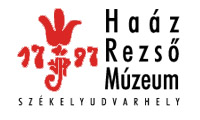Kovács Petronella (szerk.): Isis - Erdélyi magyar restaurátor füzetek 13. (Székelyudvarhely, 2013)
Puskás Katalin: Kísérlet a vörösbomlásos bőr kezelésére, avagy epizód egy 19. századi fotótartó mappa restaurálásából
of the more important conservation problems as regards the main types of artefacts made from parchment and untanned hide, as well as to present the advantages and disadvantages of the materials and procedures employable in the course of conservation. In their work, they relied first and foremost on the lessons gained from practical work performed during the training of applied arts conservators at the Hungarian University of Fine Arts, but also on research reported in the specialist literature. The survey showed that the substances and procedures developed in the heroic age of the 1980s are today already well known, that many are successfully using them, and that the earlier methods are being continually developed further. There is a need for continuous rethinking, because a lot of things have changed in the last decades:- Environmental and health rules have become stricter, and conservators, too, have become much more aware in this field. With the help of the Internet, it has become easy to find out about the effects of chemicals on the basis of the data-sheets concerning them. Even when not a danger to the work of art under treatment, some substances (e.g. methyl alcohol, benzene, thymol) can no longer be used for reasons of human health, while others (e.g. sperm whale oil) have been dropped in the interests of nature conservation.- Conservation expectations have changed. While a few decades ago the primary standpoint was that a work of art should be as clean, as smoothed off, and as similar to the original as possible, today the aim is not the removal of marks made by use.- In the past decades, in the interests of preserving the written cultural heritage primarily, serious research programmes have dealt with the investigation of parchment as a material. Owing to these, we now have a more nuanced picture regarding the kinds of changes that take place in it during the manufacturing process and when it ages. We know that as it decays, parchment’s shrinkage temperature decreases, and that as it ages parchment is less and less capable of absorbing moisture and does so more and more slowly. On the other hand, as it ages it dries out at a faster rate. It is a known fact that its temperature increases as it takes in moisture, which may increase the danger of gelatinisation. It has also been observed that although the 50-55% RH recommended earlier best ensures the elasticity of the collagen, chemical decay can be slowed down if this is reduced to 40^15% during storage. In many cases, we have no concrete information on the effects of different substances on parchment and untanned hide as materials used in works of art. However, the above-mentioned researches have proved that these materials react to outside influences in a much more complex way than was earlier thought. With this in mind, a worthwhile goal is to conduct on works of art only those interventions which are absolutely necessary from the point of view of their survival. We should try to assess their condition by measuring their pH value and the shrinkage temperature, minimise as much as possible treatments performed with solutions and mixtures using water, and perform softening by means of slow, gradual, humidification and slow drying. Also, with the help of experiments, we should attempt to reduce the risks attendant on the different treatments and regularly check the condition of the artefacts conserved earlier on. Translated by Chris Sullivan Katalin Puskás An Experiment Regarding Leather Affected by Red Rot, or an Episode from the Restoration of a 19,h-century Photograph Album Many of the covers of leather-bound books and other leather artefacts found in libraries and other public collections are susceptible to red rot. This is connected with changes, in the 19th century, to production techniques for vegetable-tanned leathers, and also to the sudden change in the quantity of harmful materials polluting the air. We encountered this very problem when restoring the photograph album. Therefore, when treating the leather covering we decided to try out in Hungary a chemical developed by colleagues at the Leather Conservation Centre in Northampton, England, and used successfully by them. As well as relating in brief the different steps in the restoration work, the present piece of writing gives a detailed account of the laboratory experiments and observations which preceded our use of the chemical on the leather covering of the album. In this case, the aim of the restoration was to halt the red rot, to reduce the acidity in the leather, and to stop the leather crumbling away. This type of decay in leather is called red rot when the colour of the leather changes from brown to red and when its pH value, cohesion, and, consequently, its shrinkage temperature also decrease. Depending on the degree of the problem, the leather’s strength changes: it splits into different layers, flakes off, and, in more serious cases, turns completely to dust. This phenomenon was observed in 1905 already. Later, with the investigation in the 1920s and 1930s of the tanning agents used, a search was launched for the causes of red rot and for solutions to the problem. After many unsuccessful experiments, researchers directed their efforts towards working out a revolutionary new procedure: re-tanning. Employing a procedure using aluminium salts that was already known from leather-making, they showed, in the 1940s, that using this procedure on leather originally tanned using vegetable substances increased the resistance of the leather to agents causing acidity-driven decay. When the findings of numerous experiments had been appraised, a chelate of aluminium isopropoxide and ethyl acetoacetate (short name: aluminium alkoxide) was found to be the most suitable. Later on, a suitable treatment technique was worked out. 222
